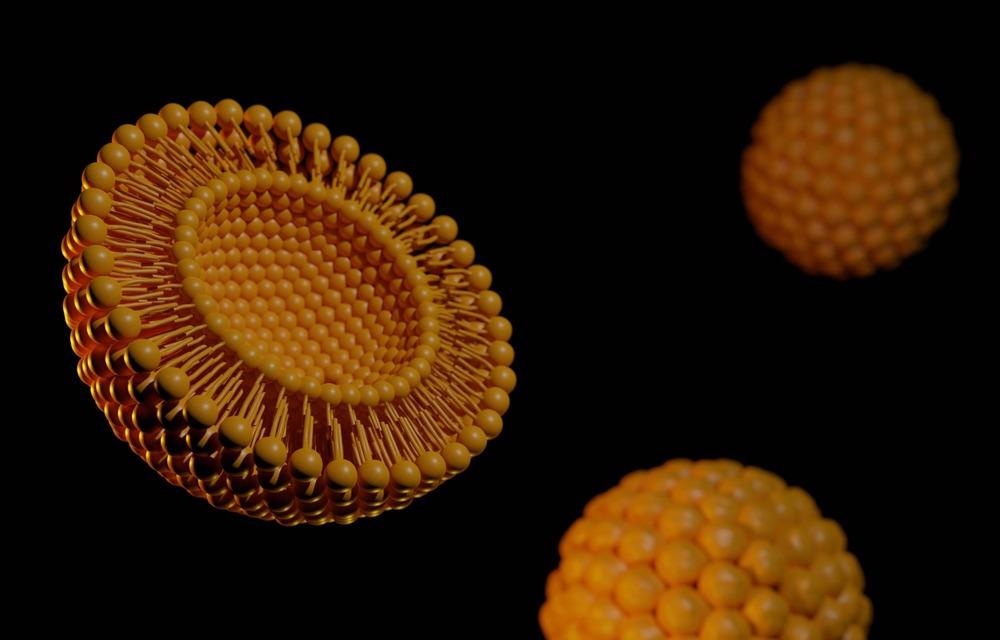Researchers have developed many materials in recent decades to deliver medications locally and over long periods of time. These polymers, known as drug-delivery systems, offer significant safety benefits by permitting on-target drug exposure while reducing side effects and the cost of treatment. In the new COVID-19 vaccine created by Pfizer and BioNTech, the importance of correctly engineered DDSs was highlighted by ACS Applied Bio Materials.

Study: “Smart” Delivery of Monoclonal Antibodies from a Magnetic Responsive Microgel Nanocomposite. Image Credit: Love Employee/Shutterstock.com
DDSs made of liposome nanoparticles were utilized to transfer mRNA to human cells without degrading it. Hydrogels have proven more important for biological applications among some of the ever-increasing materials created for the DDS. Because of their high moisture content (up to 99%), they are suitable for water-based biological settings such as human fluids.
Smart Drug Delivery
In the realm of DDS, modern efforts are concentrated toward "smart" drug-delivery devices (SDDSs). These materials can transport and administer medications selectively in response to external (e.g., magnetic field) or endogenous (e.g., pH of a tumor region) stimuli, boosting therapeutic efficiency while reducing drug exposure and therapeutic response.
Targeted and "smart" delivery techniques are particularly intriguing for treating cancer tumors while reducing the negative effects that patients experience with traditional chemotherapies.
Calcium Alginate Hydrogels
Treatment chemicals can be delivered locally into tumors, increasing therapeutic efficiency while lowering adverse effects and expenses. Magnetic materials offer a wide range of uses in cancer theranostics. Their magnetic responsiveness has mostly been used for magnetic aggregating and tumor detection, targeted drug administration activated by a magnetic field, and cancer therapy hyperthermia. Calcium alginate hydrogels are well-known polymers in the field of medication delivery.
Biocompatibility, encapsulation efficiency, and ease of synthesis have all been used to encapsulate and distribute nanoparticles, proteins, DNA, RNA, and antibodies, among other things. The hydrogel's high porosity improves entrapment efficiency and enables the rapid release of contained compounds. This porosity, on the other hand, is a serious issue for targeted or "smart" distribution, in which greater control of the release process is required.
The hydrogel's high porosity improves encapsulation efficiency and enables for rapid release of contained compounds. This porosity, on the other hand, is a serious issue for targeted or "smart" distribution, in which greater control of the release process is required.
The researchers were particularly interested in employing this delivery technique to deliver monoclonal antibodies to specific locations. The usefulness of monoclonal antibodies in curing cancer patients has been acknowledged in cancer immunotherapy throughout the previous decade. Trastuzumab, often known as Herceptin, is a drug that is used to treat invasive breast cancer with overexpression.
New Technique for Controlling Drug Release
Medication-delivery systems that are "smart" offer a lot of potential for improving therapeutic effectiveness, avoiding unwanted immune responses, and reducing drug side effects. In this paper, the author provides a new technique for controlling drug release utilizing two magneto-activated substances in the mechanism.
A drug-delivery system made of alginate (Alg) hydro microgel nanocomposite (PVA-DB-IPN-Alg) filled with magnetic nanoparticles (MNPs). When a magnetic signal is received, the pharmaceuticals or model (bio)molecules are loaded and then released.
The main source of worry was the well-known low stability of ionotropic alginate hydrogels in high-ionic-strength environments, particularly those with high Na+ and K+ ions levels. Calcium alginate hydrogels are sustained by weak ionic attraction among calcium ions as well as the alginate polymer's guluronic components.
Nanoscience and drug delivery -- small particles for big problems | Taylor Mabe | TEDxGreensboro
Video Credit: TEDx Talks/Shutterstock.com
By substituting Ca2+ ions for Na+ ions, the presence of large amounts of Na+ accelerates the de-gelling of the alginate gel. This is followed by the entry of water, which raises the osmotic pressure and the hydrogel's free volume.
In strong ionic strength fluids, such as human serum, substantially quicker diffusing rates are found. The researcher devised a novel approach for targeting and magnetically inducing protein and antibody delivery and release. To do this, we created and improved a "smart" transportation hydrogel system based on PVA and alginate, two biocompatible polymers that efficiently entrap and deliver biomaterials cargo inside the presence of hydrogen peroxide.
The improved release whenever the material was magnetic aggregating was validated for minor protein payloads like BSA, but because of favorable drug-polymer associations, the best release/leakage ratios were observed with trastuzumab (TmAb).
Furthermore, the materials and strategy's effectiveness was proved in complicated situations such as human blood serum. In comparison to tests in which catalase was added in bulk, the technique should be examined in real samples of human blood to see if there is a positive or negative influence on release rates.
While iron oxide magnetic nanoparticles are being evaluated for a variety of biological applications, including MRI contrast agents, targeted drug delivery vehicles, angiogenic treatment, and chemotherapy, further research on their potential toxicity is needed.
In a human plasma solution, which is still a model system, the effectiveness of the examined system for signal-triggered biomolecule release was tested. For a variety of reasons, such as larger distances between an electrostatic interaction and the magnetic particles, the medical use in a human or animal body may have varying efficiencies with necessitating improvement.
References
Roquero, D., et al. (2021). “Smart” Delivery of Monoclonal Antibodies from a Magnetic Responsive Microgel Nanocomposite. Applied Bio Materials. Publication Date: 8 November 2021. https://pubs.acs.org/doi/10.1021/acsabm.1c00994
Disclaimer: The views expressed here are those of the author expressed in their private capacity and do not necessarily represent the views of AZoM.com Limited T/A AZoNetwork the owner and operator of this website. This disclaimer forms part of the Terms and conditions of use of this website.